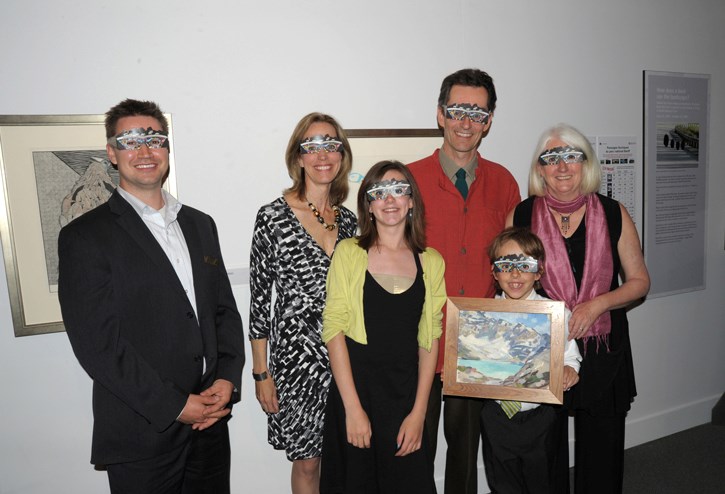The Whyte Museum of the Canadian Rockies received a considerable boost recently with the surprise donation of the Carl Rungius (1869-1959) plein air sketch that would inspire his famed 1925 painting Lake McArthur.
Peter Poole, a trustee with the Eleanor Luxton Foundation and head of Banff-based Arctos & Bird, presented the small sketch to Whyte Museum executive director Michale Lang during the opening of the Yellowstone to Yukon: The Journey of Wildlife and Art exhibition June 16.
“Peter was standing there with a burlap bag and he asked me to come up with him.
“And he pulled this sketch out of the burlap bag and it was a complete surprise to me.
“And I just burst into tears,” Lang said Monday (June 25).
Like many painters inspired by the great outdoors, Rungius spent nearly 50 summers in the Canadian Rockies sketching outside, capturing a sense of the light, textures and colours of his subject. Once back in his studio – and he had one in Banff and another in New York – Rungius would create a new painting, refining the sketch and enhancing it.
While Lang said the Whyte would be happy to have any of Rungius’ sketches or studies, having this particular piece in the collection is especially significant as it adds another layer to the award-winning studio print of Lake McArthur.
Having both the studio painting and the sketch that inspired it provides both the Whyte Museum and its visitors with an opportunity to see how Rungius developed his paintings.
“In this case there’s a suggestion of the light in very broad brush strokes, but where you see the finished work you see how much more subtly he’s woven that light in a way that gives you a feel of the light,” Lang said.
“The final painting was very subtle and you can see how he managed to capture that. It gives you a feeling for the work, how the artist worked in the field and how that’s refined in the studio and I think that is very exciting.
“That painting captures McArthur beautifully and the way he has framed it, the way he cuts off the top of the mountain behind it, it’s just incredible.”
Held as part of the Whyte Museum’s collection, Lake McArthur won Rungius the prestigious $500 Carnegie Prize for landscape while showing the piece at the National Academy in New York in 1925. An image of the painting appeared in both the New York Times and the New York World.
Lake McArthur became a part of the Whyte Museum’s collection in the 1970s following the death of Alfred L. Castle of the Dole Pineapple Co. after the museum’s founder Catharine Whyte, asked Castle if he would donate the painting following his death.




